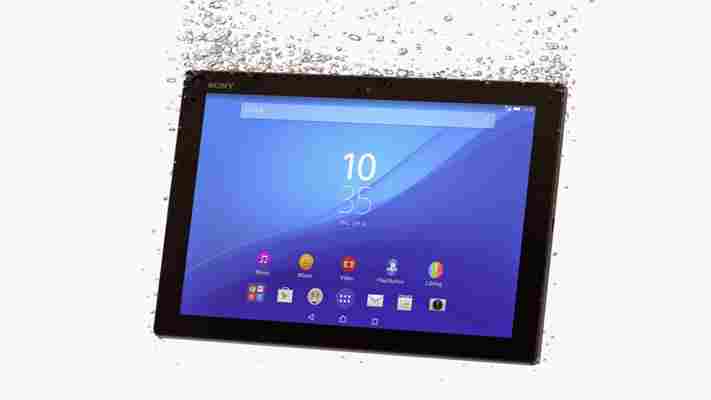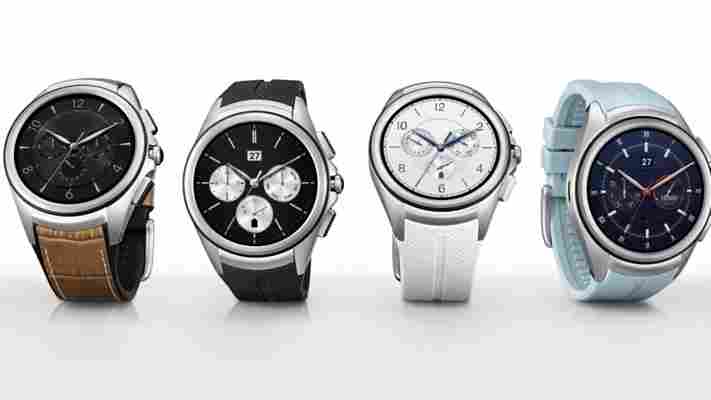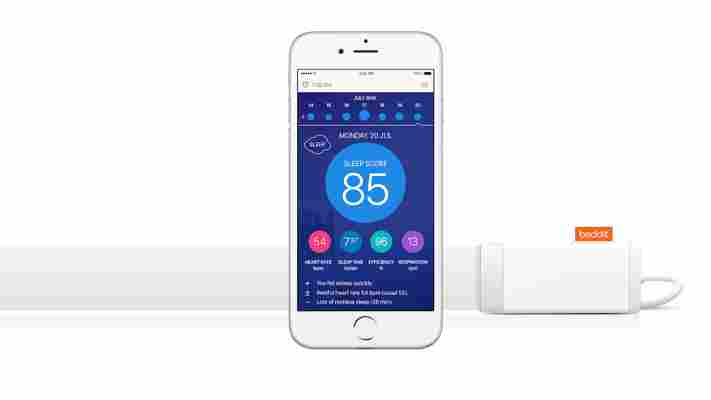Sony has announced the launch of its new Xperia Z4 tablet and it’s one of the lightest and slimmest 10-inch tablets on the market.

In addition to the 10.1-inch, 2k display, the tablet features a Qualcomm Snapdragon 810 octa-core 64-bit processor, supports LTE connectivity and is also waterproof.
It also has a 6,000mAH battery that Sony is capable of 17 hours of video playback and comes with 32GB of internal storage.
Camera-wise, the Xperia Z4 Tablet has an 8MP sensor on the rear and a 5.1MP wide-angle front camera for video calling or selfies.
Sony’s also focused on improving multimedia performance for the Z4, which includes a surround sound audio effect, and if you plug in headphones the tablet senses what type or style of headphones they are and automatically adjusts the settings to suit.
It also supports noise cancellation so if you are on Skype or using the tablet for a video call or to make a video, you can block out background interference.
Pricing and release details for the tablet are yet to be confirmed, but we’ll update when we hear more.
LG’s 2nd edition Urbane smartwatch works without your phone
Alongside its nifty dual-display V10 phone , LG showed off its upcoming Watch Urbane 2nd Edition in Seoul. The company says it’s the first Android Wear device to feature cellular connectivity.

The watch supports 4G and 3G networks, so it can work without connecting to your phone over Bluetooth or Wi-Fi.
https://www.youtubeom/watch?v=FdRymDRtPJA
LG also notes that its latest wearable has the highest resolution display of any smartwatch on the market — at 1.38 inches, the circular 480 x 480 pixel screen delivers 348ppi — higher than the Apple Watch that tops out at 326ppi.
The Urbane features heart rate tracking, stress level monitoring and workout tips for active users. It’s powered by a 1.2GHz Snapdragon 400 processor with 768MB RAM and 4GB of onboard storage, and has a 570mAh battery that LG says will keep it running for more than a day on a single charge.
The hairline-etched stainless steel body is paired with a hypoallergenic TPSiV elastomer band . Three buttons on the right side let you access settings such as contacts, LG Health and your apps list.
I’ll be interested to see how it fares against the Apple Watch and Samsung’s $300 Tizen-based Gear S2 . The LG Watch Urbane 2nd Edition will be available first in the United States and South Korea, followed by Europe, Asia and the Middle East.
The company hasn’t yet announced pricing and availability.
➤ First cellular Android Wear smartwatch previewed at LG event [LG Newsroom]
Review: the Beddit Smart sleep monitor says I need a nap
How can you quantify sleep? You wake feeling rested — or like you could use a nap — but how does that feeling translate to data?

That’s where Beddit comes in. With a small sliver of plastic and an app, the Beddit platform wants to help you understand what happened while you were asleep, and if you need more rest.
Beddit’s hardware is slight, but powerful. A hub connects to a thin band that you put under the sheets on your bed. The strip has a pretty strong adhesive layer so it doesn’t slip away while you sleep.
You also need to keep Beddit plugged in. If your bed is in front of an outlet, you’ll be fine. If you aren’t near an outlet, the short cord won’t do you many favors.
The main way you’ll interact with Beddit is via the app, naturally. It’s fairly no-frills, too.
After a setup process (which is a typical email and password situation), you’re ready to roll. All Beddit wants to know is when you’re sleeping, and if you need an alarm.
If you want more granular information, Beddit can provide that. A quick peek into some sleep metrics tells you how long it took to fall asleep, how restless you were and the total time you were awake.
The app also assigns you a sleep efficiency score. It provides a quick glance at how much time you spent actually sleeping; a number Beddit feels should not dip below 85 percent.
There’s also an Apple Watch app, which gives you access to your sleep data from the previous night and an option to set a nap alarm. The Apple Watch app can show you performance stats versus the night before with little up or down arrows.
If you like, there’s also a Web view. Beddit stores your sleep info in its own cloud storage, so it’s accessible anywhere. You won’t get any new info, though — it’s really just a different medium for the same info.
To say I used Beddit feels like lying. I was sleeping. I didn’t do much more than lay down and close my eyes.
You do need to position Beddit under your chest. That thin band needs to fall as close to center as possible. It wasn’t uncomfortable, or really even noticeable.
Beddit tells me you could place the band under a mattress topper, too. Just keep in mind the more you have between your body and the band, the more you’re jeopardizing how well it can read your body’s cues.
When I opened my eyes, the real Beddit showed up. This morning, I woke up feeling terrible. I had forgot the trouble I had falling asleep the night before, even though I slept fairly soundly through the night.
Reporting when I am going to bed is a bit unnatural, too. I typically set alarms on my phone or watch, so reaching for electronics first thing in the morning to tell Beddit I am awake isn’t a problem.
What is a problem is that Beddit needs your phone to be on and active. If you slip your phone into airplane mode at night like I do, Beddit won’t be able to communicate with the hub.
That tells me the hub has no memory, and needs a constant connection once you tell it you’re sleeping.
Battery life on your phone will also take a serious hit with Beddit if you don’t plug it in. On average, I lost about 30 percent of my battery while Beddit was doing its thing overnight.
If you’re using Apple’s Health app, Beddit will write its findings there.
While many other gadgets and apps measure sleep, I like that Beddit also measures your heart rate. The Beddit team tells me the sensors in the band are very sensitive, and the info appears to be quite accurate.
I tried Beddit out while lying still for a “nap” and measured its readings versus my Apple Watch. The readings were quite similar. The band itself doesn’t get in the way, but the adhesive means it’s staying put. If you need to flip your mattress often, I can see Beddit losing its grip over time.
The Beddit app power consumption is obtuse for those who don’t charge their phones nightly. If you’re comfortable reducing your battery life by 30 percent off the top, you won’t care. I do. I also prefer airplane mode at night (I get a ton of email and other notifications), and Beddit doesn’t support that.
I don’t see much use for Beddit in my life, but I also have no health issues. If I did — say, apnea or a similar condition where info about my body while I sleep was important — Beddit would probably be critical.
You can buy the Beddit Smart sleep monitor from the Beddit website, or via Amazon .
